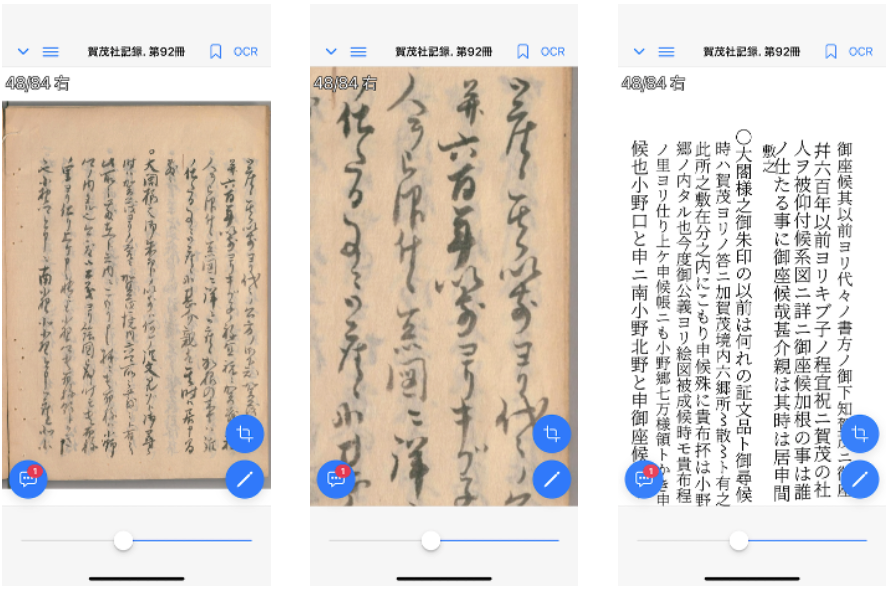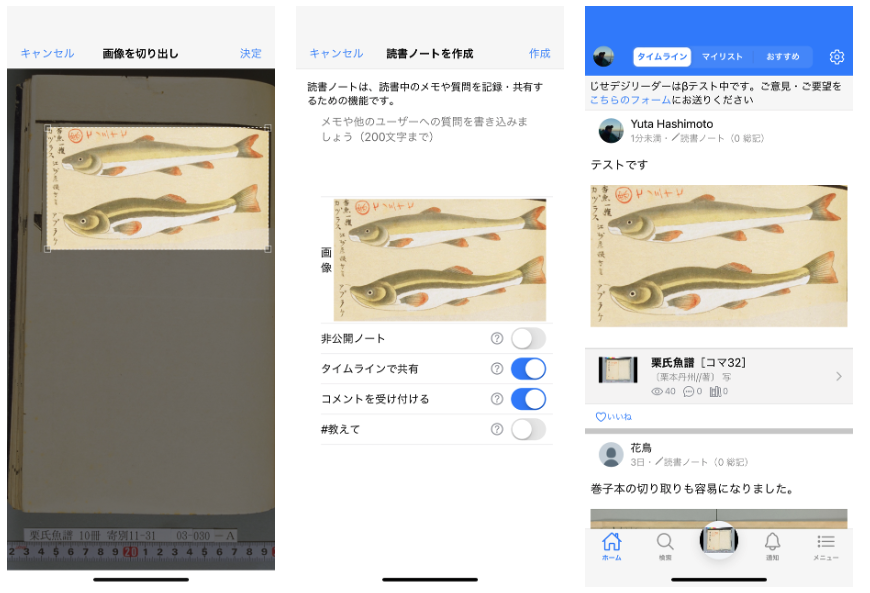1.
Introduction
Over the past few decades, the growth of social reading platforms like Goodreads and StoryGraph has made reading an increasingly social and interactive experience for readers. Social reading, which involves sharing book reviews and reading notes, is said to provide readers with a more diverse range of perspectives and a deeper understanding (Cordón-García et al. 2013 and Rebora 2021).
Additionally, for Digital Humanities, social reading holds the potential to provide foundational data for quantitative research. For instance, if a large number of lists and reviews of historical books are posted by users and made available as open data, it would be possible to apply machine learning techniques, such as clustering, to analyze and classify these books. Therefore, social reading can also be viewed as a form of crowdsourcing for generating research data (Carletti 2013 and Terras 2015).
For example, the National Diet Library (NDL) Digital Collections in Japan (
https://dl.ndl.go.jp/), despite being the digital collection with the largest user base in the country, lacks a mechanism for users to share knowledge and opinions about its materials. The NDL Digital Collections publish 360,000 books, 20,000 magazines, and 80,000 classical texts that were published in Japan from the 19th to the first half of the 20th century and whose copyrights have expired. It is impossible for an individual to fully grasp the entirety of this vast collection. If its users could collaborate to share knowledge, the value of the digital collection as an intellectual resource would be further enhanced.
This paper describes the author's attempt to build a social reading platform on the NDL Digital Collection. This platform is called Jisedai Reader.
2.
Method
The most significant challenge in building social services upon digital cultural heritage is how to draw user engagement. Merely placing forms for reviews and notes on a website is unlikely to encourage users to share their knowledge. The author's approach to this challenge is multifaceted, focusing on the user experience (UX).
Most digital collections, including the NDL Digital Collections, are not designed for users to comfortably browse materials for extended periods. Therefore, the author has attempted to maximize user engagement by providing an environment conducive to immersive material browsing, as well as offering intellectual and social stimulation. This approach is realized through the following four methods:
-
Mobile-first development. Mobile devices are now the most accessible computers for us. 68% of web traffic comes from mobile devices such as smartphones and tablets in Asia . Although a web version is planned, the author first built Jisedai Reader as a native app for iOS/Android.
-
Utilization of machine learning technologies for enhancing UX. By using AI-based image processing and optical character recognition (OCR), the author aims to build a native app that offers a user experience comparable to e-book readers like Kindle. This allows users to spend more time reading materials with less effort.
-
Providing social stimulation. Users can interact with the material reviews, inline comments, and material lists posted by users. This not only brings social stimulation to the users but also deepens knowledge sharing and discussion.
-
Providing expert content by scholars. In addition to user-generated content, the platform also offers 102 book lists containing 2,159 entries compiled by scholars with doctoral degrees. The introduction of materials based on expert knowledge is interesting as reading material and is expected to enhance user engagement. Moreover, it can serve as a normative guide for users when publishing their reviews and lists.
3.
Implementation
Jisedai Reader is built using the mobile UI framework Ionic and the cross-platform application development framework Capacitor. For backend services such as authentication and databases, it utilizes Firebase, a Backend-as-a-Service (BaaS) operated by Google.
The main component of Jisedai Reader is the book viewer. This viewer not only supports basic operations such as swipe for page turning, zooming, and panning but also accommodates split-page viewing and displays OCR text (see Figure 1). These features are realized by utilizing the API provided by the Next-Generation Digital Library (
https://lab.ndl.go.jp/dl/), an experimental service by NDL.
Users can create book lists, reviews, and reading notes on Jisedai Reader. It is possible to crop a part of an image and paste it into a reading note. This feature is made possible by utilizing the IIIF Image API provided by the NDL Digital Collections. Other users can interact by liking or commenting on these contents. However, users also have the option to keep their content private or to disable comments.
These contents are shared through a public timeline accessible to all participants. Jisedai Reader does not implement a follow system in order to prevent user echo chambers. Instead, it allows users to mute specific users or filter the content displayed based on the NDC (Japanese version of the Dewey Decimal Classification).
4.
Beta Testing
The author began the beta test of Jisedai Reader in October 2023 using iOS's TestFlight
1
. As of December, 131 people who applied through X (Twitter) are participating in the test. While most users are utilizing Jisedai Reader primarily as a browsing application, 27 different users have published 168 public reading notes, 69 public book lists, and 31 reviews. Considering the size of the current user base, this can be considered active user participation.
5.
Conslusion
This paper described the objectives, methods, and implementation of Jisedai Reader, a social reading platform for the NDL Digital Collections. Jisedai Reader is scheduled for public release in July 2024.
Figure
1 Book viewer features: page turning, panning, zooming, and OCR display functionality (Video is also available at
https://x.gd/hNLxu).
Figure
2 Users can crop images, paste them into reading notes, and then post these notes to the public timeline (Video available at
https://x.gd/Lizpw).

